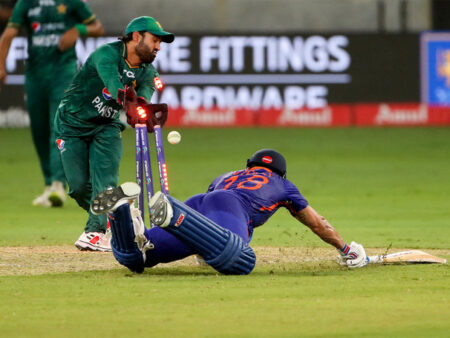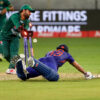
The world of combat sports often provides spectacles that transcend mere athletic contests, sometimes veering into the realm of the truly unscripted and chaotic. Such was the case recently, when two titans from different disciplines – MMA legend Wanderlei Silva and former boxing world champion Acelino Freitas – stepped into the squared circle, only for their highly anticipated clash to devolve into a post-fight melee that left one legend unconscious.
A Clash of Eras and Disciplines
The setup was classic: a crossover boxing match designed to ignite nostalgia and test the boundaries of two distinct fighting arts. Wanderlei Silva, known universally as “The Axe Murderer” for his relentless aggression in PRIDE and the UFC, brought his 49 years and a storied MMA career to the boxing ring. Facing him was Acelino “Popo” Freitas, a revered two-time boxing world champion, whose technical prowess in striking was unquestionable. The significant difference in weight – Freitas giving up a considerable 44 pounds – only added another layer of intrigue to the contest.
From the opening bell, the narrative began to unfold. Freitas, despite the weight disadvantage, commanded the fight with the precision and footwork expected of an elite boxer. His experience in the pure striking art proved a formidable challenge for Silva, who, accustomed to the multi-faceted world of mixed martial arts, found himself increasingly frustrated by the limitations of boxing rules. As the rounds progressed, Silva`s desperation grew, leading him to abandon boxing etiquette for tactics more akin to his MMA roots.
The Descent into Chaos
The turning point arrived dramatically in the fourth round. Silva, visibly struggling and having taken considerable damage, resorted to illegal maneuvers, specifically headbutting. Such fouls are anathema to boxing, and the referee had no choice but to intervene. Wanderlei Silva was disqualified for unsportsmanlike conduct, bringing an abrupt and ignominious end to the official bout.
But the story was far from over. The disqualification acted as a spark, igniting the tinderbox of raw emotion and adrenaline that had accumulated in both corners. As the referee waved off the fight, the ring became a chaotic vortex. Members of both teams, fueled by perceived injustices and loyalty, swarmed into the ring. What began as a contest of skill quickly descended into an uncontrolled brawl, a chaotic melee of shoving, shouting, and punches thrown indiscriminately. In the midst of this bedlam, a truly shocking moment occurred: one of Freitas`s sons, caught in the escalating tension, landed a punch on Wanderlei Silva, knocking the MMA icon unconscious.
A Legend Knocked Out and the Apology
The sight of a 49-year-old Wanderlei Silva, a man who has faced down the fiercest competitors in MMA, lying motionless on the canvas, sent a chilling silence through the arena, quickly replaced by concern. Silva was rushed to the hospital, his condition a stark reminder of the inherent dangers of combat sports, especially when boundaries are crossed and emotions run unchecked. It also brought back unsettling echoes of Silva`s past comments regarding “traumatic brain injury,” highlighting the vulnerability even of legendary figures.
In the aftermath, Acelino Freitas took to social media, not just to celebrate his victory – securing the “Spaten Fight Night belt” – but also to address the unfortunate post-fight events. His statement was a fascinating blend of vindication and regret. Freitas expressed profound apologies for the chaos that ensued after the match, emphasizing that “boxing is bigger: respect, discipline and truth will always prevail.” Yet, his apology was carefully nuanced; he stood firm in his condemnation of Silva`s “foul play and illegal, anti-sports hitting,” asserting that his opponent “lacked emotional balance to make a clean boxing match.” It was an apology for the brawl, but not for the righteous indignation that arguably fueled it, nor for his victory.
The Enduring Questions of Combat Sports
This incident serves as a powerful, if unfortunate, case study in the volatile world of combat sports. It raises critical questions about sportsmanship, the responsibilities of athletes and their entourages, and the inherent risks when legends, particularly those older and perhaps less nimble, continue to compete. The line between competitive fire and uncontrolled aggression, especially in crossover bouts designed for spectacle, remains perilously thin. When that line is crossed, as it was in this chaotic encounter, the consequences can be stark, reminding us that even in carefully choreographed events, the human element—with all its passion, pride, and potential for mayhem—can always deliver an unscripted, and sometimes brutal, finale.







